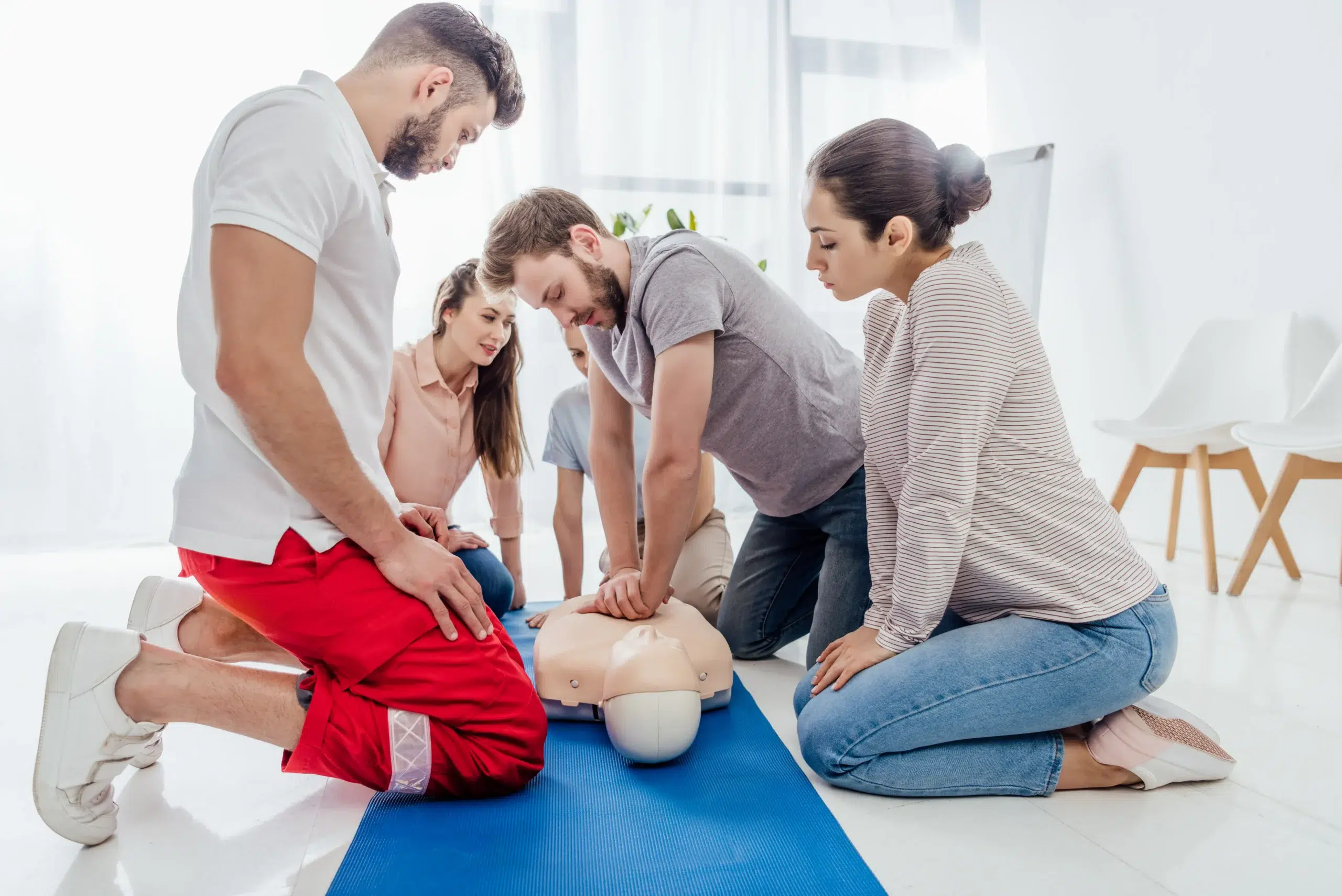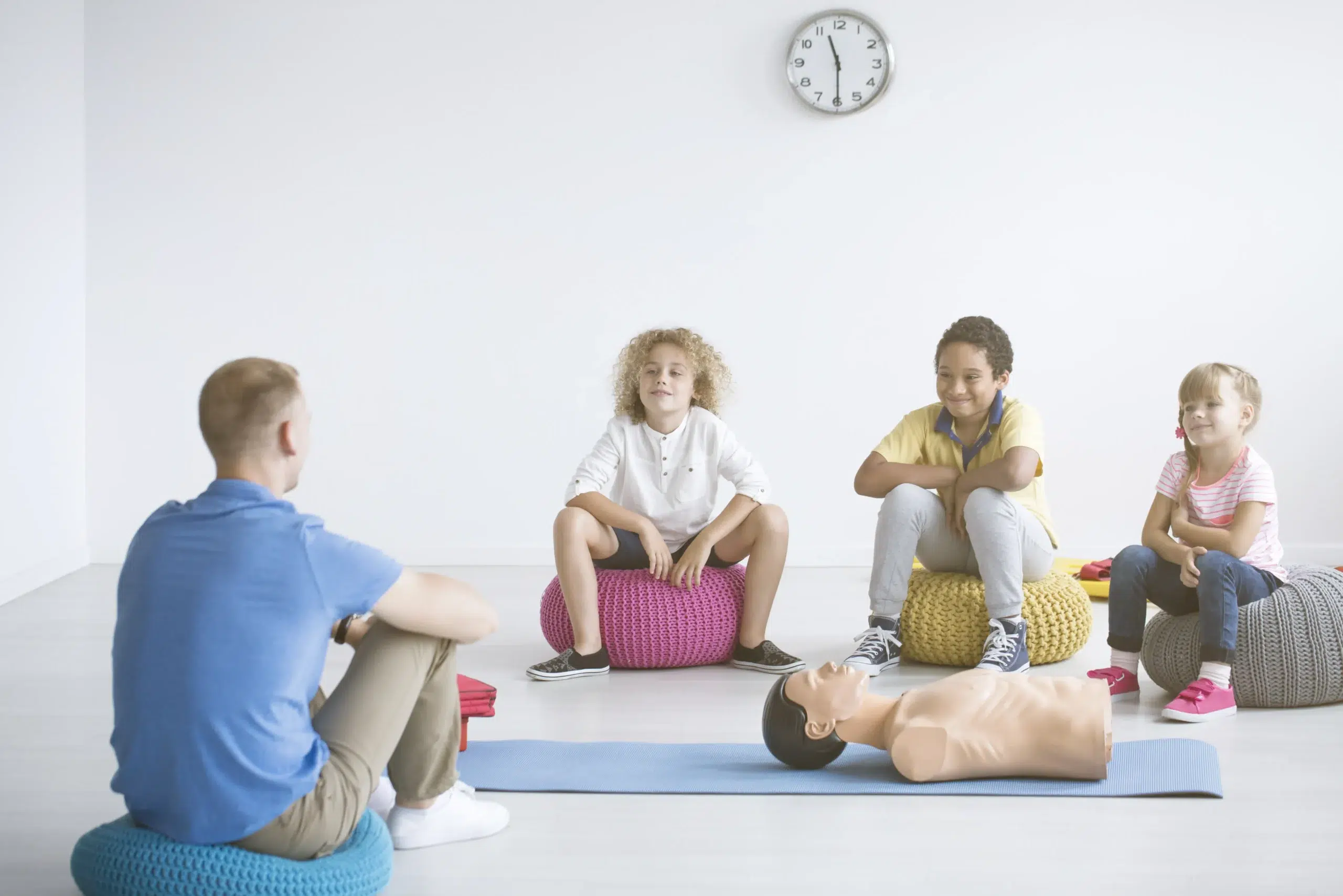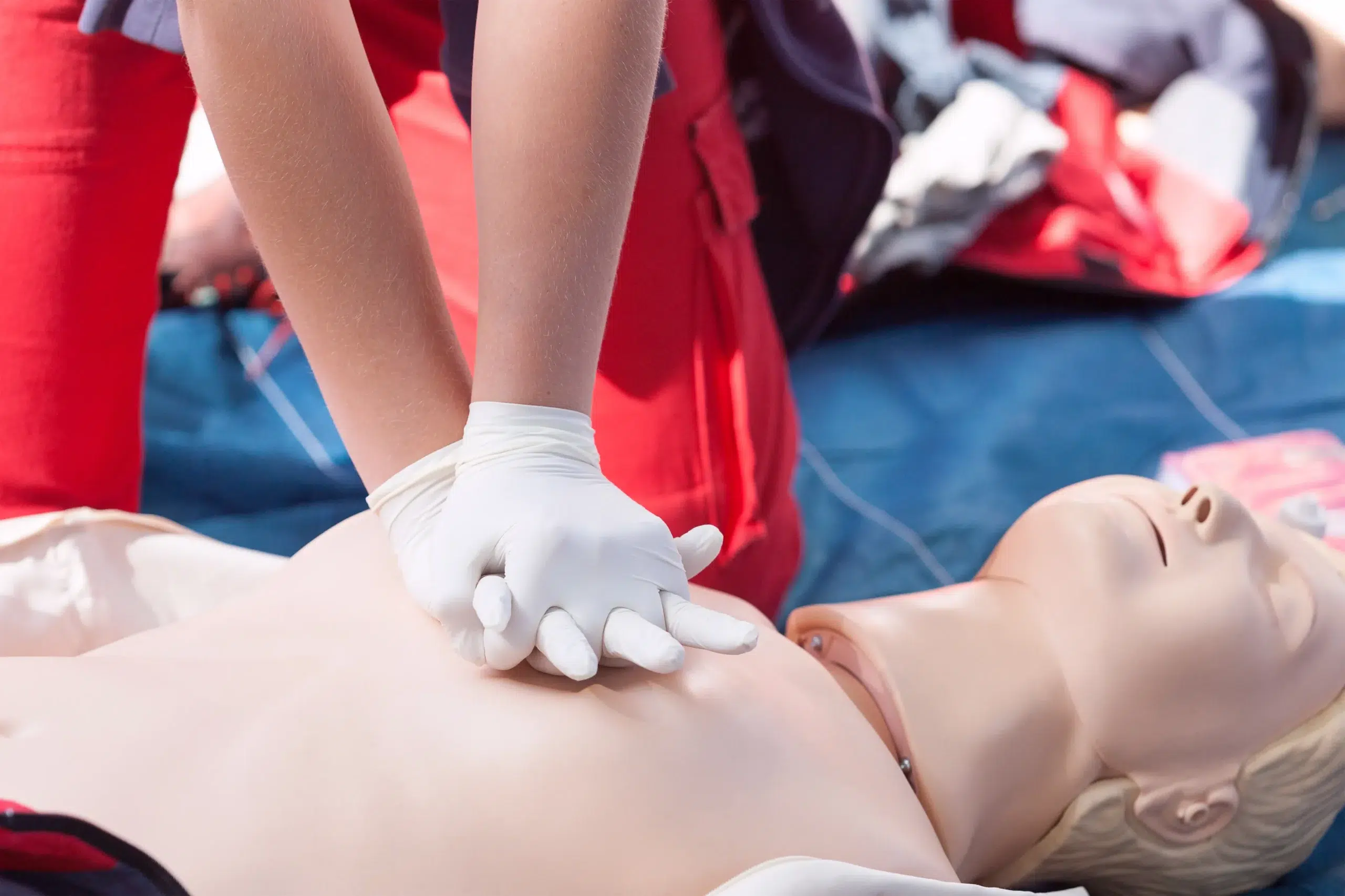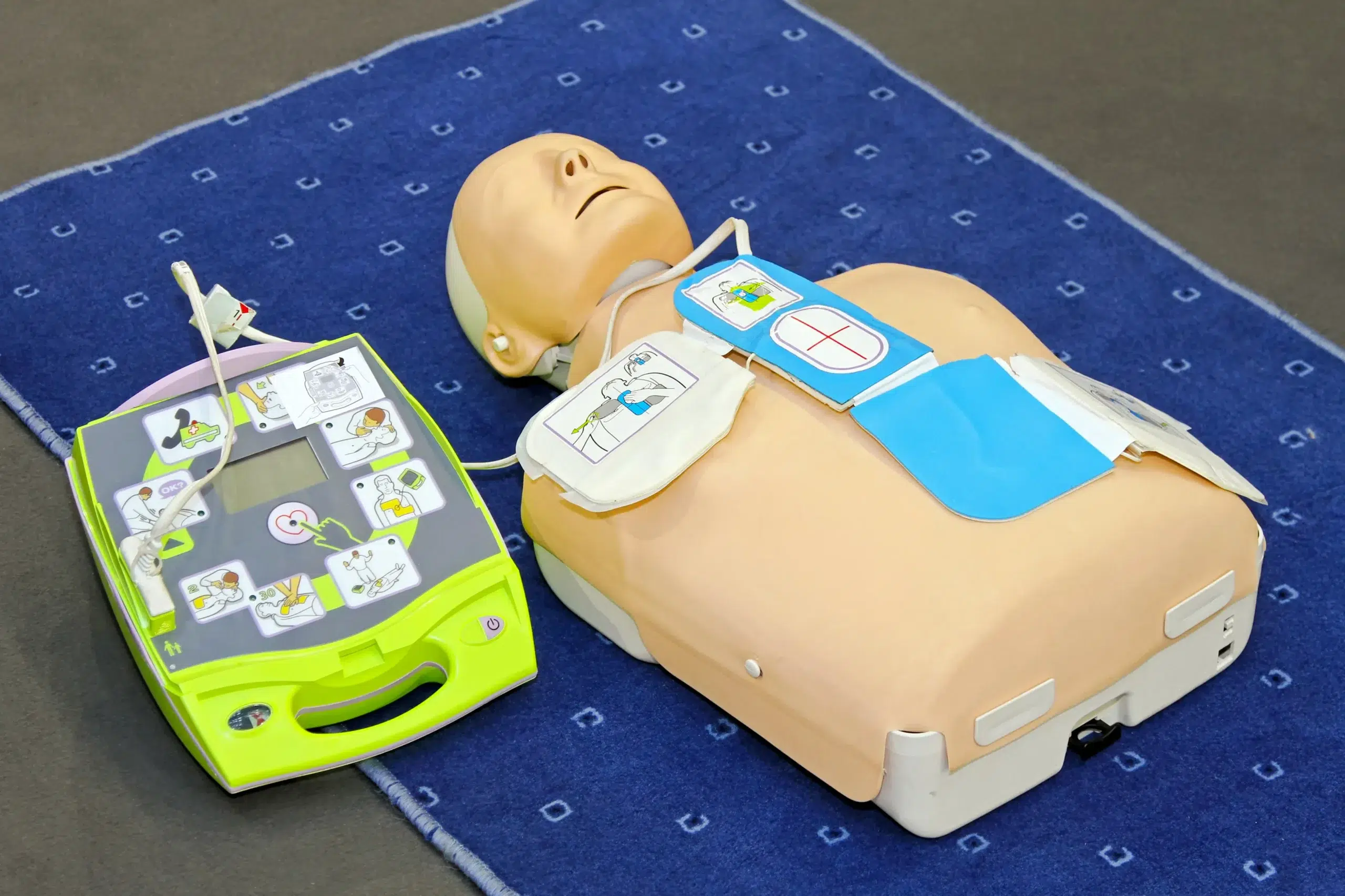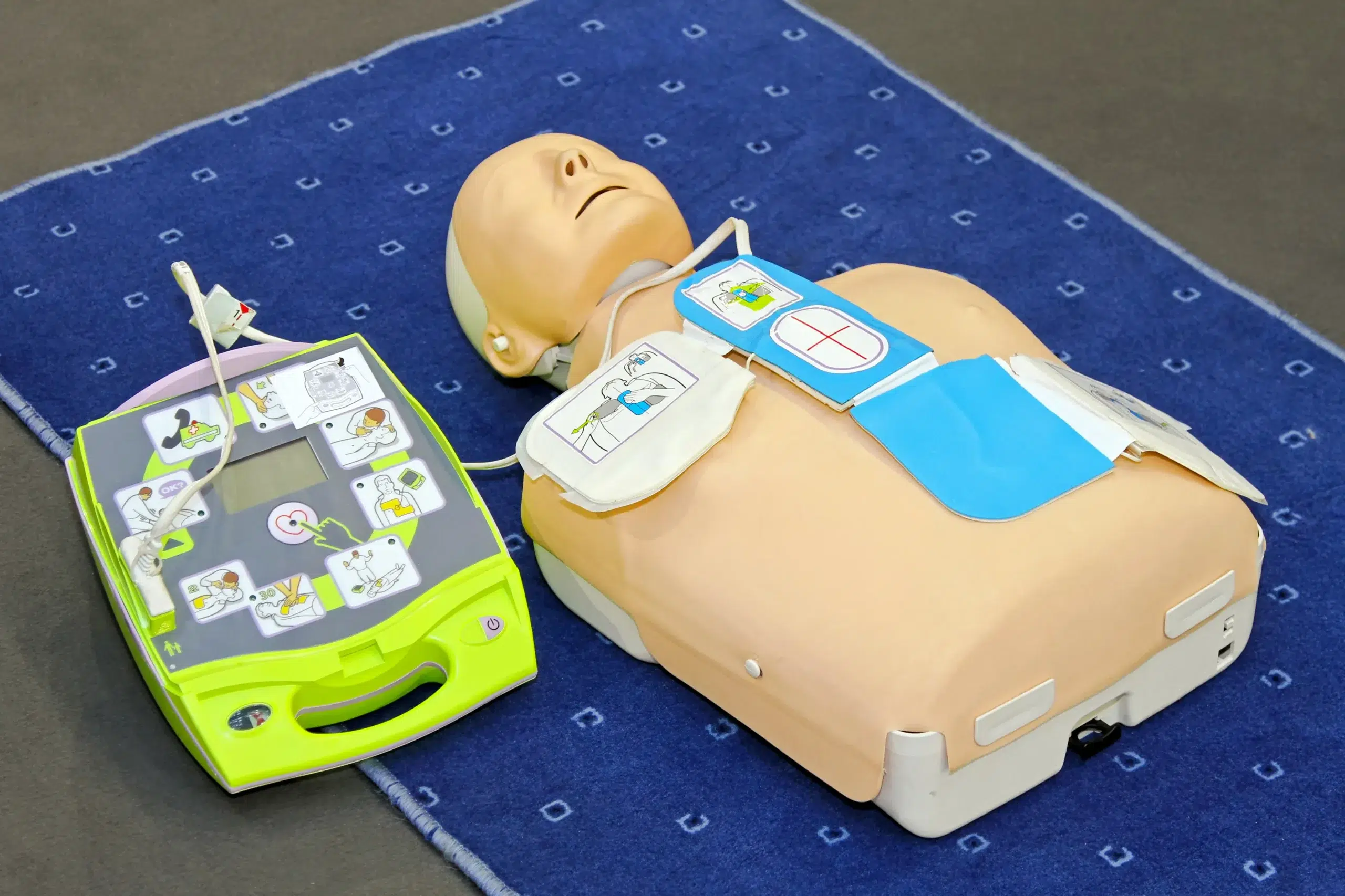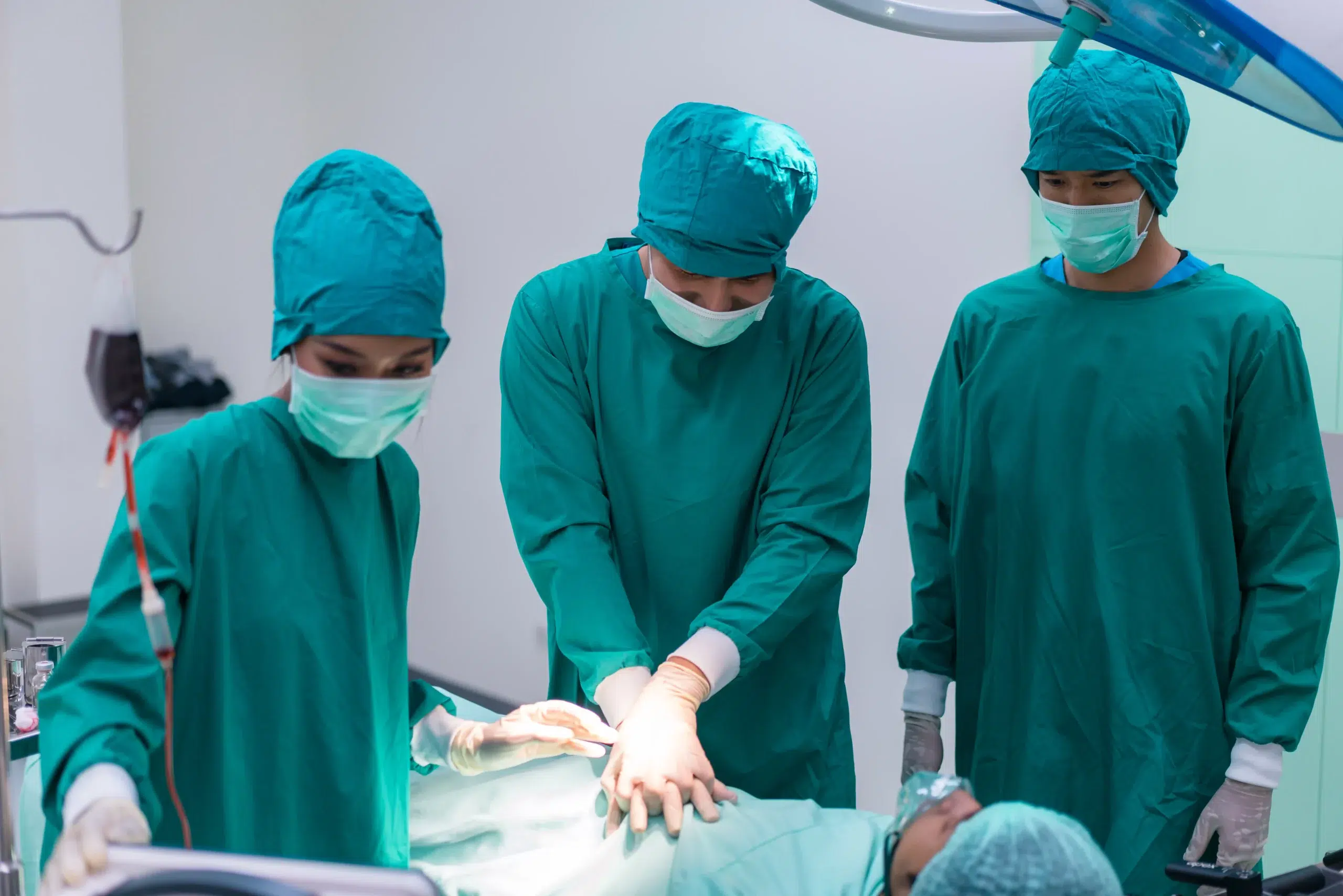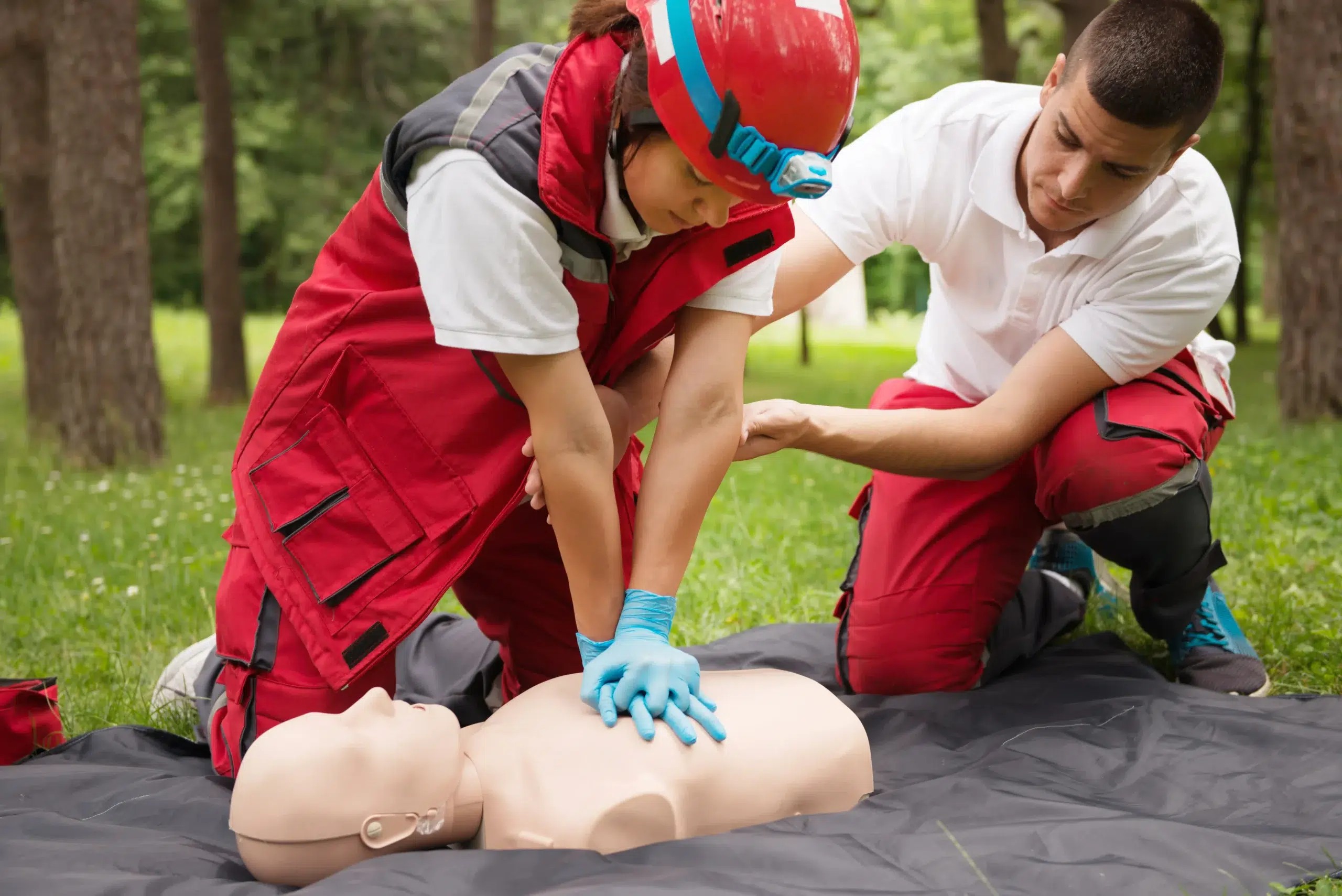Have you ever considered how you’d react in a medical emergency? Would you have the confidence and skills to provide effective help? BLS (Basic Life Support) certification empowers you to respond confidently in critical situations. This guide will explore the world of BLS, from understanding its importance to finding the right “BLS classes near me.” We’ll discuss the difference between BLS and CPR, the professional and personal benefits of certification, the various types of BLS courses available, and what to expect during training. Whether you’re a healthcare worker, a caregiver, or simply someone who wants to be prepared, this guide will help you take the first step toward becoming BLS certified.
Key Takeaways
- BLS certification provides essential life-saving skills: You’ll learn CPR, AED use, and airway management techniques, empowering you to confidently handle medical emergencies. This training is invaluable for both personal and professional use.
- Finding the right BLS course is crucial: Consider accreditation, course format (in-person, online, or blended), and cost when selecting a provider. Look for reputable organizations like the American Heart Association or the American Red Cross to ensure high-quality training.
- Preparing for your BLS class sets you up for success: Reviewing the course material beforehand and familiarizing yourself with basic life-saving skills can significantly improve your learning experience and boost your confidence.
What is BLS?
Definition and Purpose
BLS certification teaches you the essential skills to save a life. You’ll learn CPR (cardiopulmonary resuscitation), how to use an AED (automated external defibrillator), and how to clear a blocked airway. With this training, you’ll be prepared to handle medical emergencies with confidence. It’s crucial for anyone working in healthcare or emergency response, ensuring they can act quickly and effectively when it matters most. Our BLS certification course in Oakland covers all of these essential skills.
BLS vs. CPR: What’s the Difference?
While both CPR and BLS teach life-saving techniques, there are key differences. Think of BLS (Basic Life Support) as a more advanced version of CPR. It’s designed for healthcare professionals and first responders like doctors, nurses, and EMTs. BLS includes everything in a standard CPR course, plus more in-depth training. You’ll learn additional techniques for managing cardiac arrest, respiratory distress, and advanced airway management. The American Red Cross offers a helpful comparison of BLS and CPR certification.
Why Get BLS Certified?
Getting your BLS certification is a smart move for many reasons—it can open doors in your career, boost your confidence in emergencies, and quite literally, equip you to save a life. Let’s explore the key benefits.
Professional Requirements
For many healthcare professionals, BLS certification is a must-have. Employers in hospitals, clinics, and other healthcare settings often require it. This is because BLS skills are fundamental to patient care and demonstrate a commitment to maintaining high standards of safety and preparedness. Even if it’s not explicitly required, having BLS certification can give you a competitive edge when applying for jobs. It signals to potential employers that you have the essential skills to handle critical situations and provide effective patient care. BLS training is also available for those who want to teach these vital skills.
Life-Saving Skills
BLS certification equips you with the skills to respond effectively in medical emergencies. You’ll learn CPR, how to use an AED, and techniques for relieving airway obstructions. These skills empower you to confidently handle a range of situations, from a heart attack or stroke to a choking incident. Knowing you have these skills can bring peace of mind, both on the job and in your daily life. You’ll be prepared to assist family, friends, coworkers, or even strangers in need. Learn more about our BLS courses in Oakland.
Career Advancement
A BLS certification from a recognized provider like the American Heart Association shows that your training meets the highest industry standards. This can be a significant advantage for career advancement, especially in healthcare. Many employers prefer or require AHA-approved BLS certification, and it can open doors to more specialized roles. It also shows your commitment to professional development and your dedication to providing excellent care. Whether you’re just starting your healthcare career or looking to advance, BLS certification is a valuable investment. Consider our American Heart Association BLS course to ensure you receive top-tier training. We also offer ACLS and PALS certification for advanced life support training. For cost savings, check out our group discounts and our low price guarantee.
Types of BLS Classes
Choosing the right BLS class format depends on your learning style, schedule, and budget. Let’s break down the three main types: in-person, online, and blended learning.
In-Person Classes
In-person BLS classes offer hands-on training and direct interaction with a certified instructor. This format is ideal for people who learn best through tactile experiences and appreciate immediate feedback. You’ll practice skills like chest compressions and rescue breaths on mannequins, and your instructor can correct your technique in real-time. In-person BLS training often offers group discounts, making them a cost-effective option for workplaces or groups of friends. This class format creates a collaborative learning environment where you can ask questions and learn from your peers. For those in the Oakland, Alameda, and Berkeley areas, you can find convenient in-person classes through Oakland CPR Courses.
Online BLS Courses
Online BLS courses provide flexibility and convenience, allowing you to learn at your own pace and on your own schedule. This format is perfect for people with busy lives or limited access to in-person training centers. Reputable online courses, like those offered by the American Heart Association, cover the same core material as in-person classes. Keep in mind that online BLS courses typically require an in-person skills assessment to receive your certification. Make sure the online course you choose aligns with your state’s requirements and is accepted by your employer.
Blended Learning
Blended learning combines the best of both worlds: the flexibility of online learning with the hands-on practice of in-person training. Programs like HeartCode BLS allow you to complete the cognitive portion of the course online at your own speed. Then, you’ll attend a shorter in-person skills session to demonstrate your proficiency to a certified instructor. This format is a great option for those who want the convenience of online learning but also value the personalized guidance of an instructor. Blended learning can also be more affordable than traditional in-person classes.
Find Reputable BLS Classes Near You
So, you’re ready to get your BLS certification—great! Now comes the task of actually finding a class. Here’s what to look for when choosing a BLS course provider.
Accredited Providers
First things first: make sure any BLS class you take is from an accredited provider like the American Heart Association (AHA). This ensures your training meets nationally recognized standards and will be accepted by employers and licensing boards. AHA-accredited courses are designed to give you the skills you need to respond effectively in emergencies. You’ll learn the latest science-based techniques and best practices for providing high-quality BLS care.
Local Training Centers
Finding a class near you shouldn’t be a struggle. Several training centers offer BLS certification in most areas. Safety Training Seminars provides AHA-accredited courses in CPR, BLS, ACLS, PALS, and First Aid. You can also check with organizations like the American Red Cross and local hospitals or community centers. Having a few options lets you compare schedules and find a class that fits your availability.
Online Search Strategies
When searching online for “BLS classes near me,” compare course content, schedules, and pricing from different providers. Look for training centers that offer convenient weekend or evening classes. Some centers, like Oakland CPR Courses, offer discounts for group classes, which can be a great option if you’re signing up with coworkers or friends. Reading reviews can also help you get a sense of the quality and reputation of different providers. A little research upfront can save you time and ensure you find the right BLS class for your needs.
What Happens in a BLS Class?
If you’re considering BLS certification, you’re probably curious about what to expect. A BLS class equips you with the knowledge and skills to respond effectively in medical emergencies. Here’s what a typical BLS course entails:
Course Curriculum
BLS certification focuses on essential life-saving skills. You’ll learn adult, child, and infant CPR, how to use an automated external defibrillator (AED), and techniques for relieving airway obstructions. The curriculum often uses real-life emergency scenarios to prepare you for various medical situations. Oakland CPR Courses offers comprehensive BLS training covering these core skills.
Hands-On Training
BLS classes aren’t just lectures. You’ll participate in extensive hands-on training to practice the skills you learn. This practical experience builds muscle memory and confidence. In-person training allows you to work with instructors and receive immediate feedback. Oakland CPR Courses partners with Safety Training Seminars, an AHA-accredited training center, to provide high-quality, hands-on instruction. They offer group discounts, making it a smart option for workplaces or groups of friends. Check out their low price guarantee.
Certification Exam
After completing the course and hands-on training, you’ll take a certification exam to demonstrate your proficiency. This exam typically involves both written and practical components. Upon successful completion, you’ll receive an official certification card, valid for two years. American Heart Association-accredited courses offer nationally recognized training, ensuring your certification is respected and valued.
Cost of BLS Classes
When considering BLS certification, cost is naturally a factor. Understanding the typical price range, available discounts, and the overall value of the training can help you make an informed decision.
Average Price Range
BLS certification courses typically range in price, often depending on location, course format (in-person or online), and the certifying organization. You can find high-quality, AHA-certified BLS courses for around $70 to $90. For example, in Oakland, CPR Certification Oakland offers a CPR class for $64.95, while a combined First Aid + CPR class costs $84.95. Comparing a few options is always smart to find what works for your budget and schedule.
Group Discounts and Promotions
Many training centers offer discounts for group bookings, which makes BLS certification more affordable for workplaces, community groups, or even a group of friends. Oakland CPR Courses offers these group discounts, which can significantly lower the per-person cost. Check with your chosen provider about similar discounts or any promotions that might save you money. Oakland CPR Courses also has a low-price guarantee.
Invest in Life-Saving Skills
While cost is a consideration, remember that BLS certification equips you with invaluable, potentially life-saving skills. Learning CPR, how to use an AED, and how to relieve airway obstructions empowers you to respond effectively in medical emergencies. This knowledge and confidence are priceless, making BLS certification a worthwhile investment in yourself and your community. Think of it as an investment in preparedness, knowing you have the skills to make a difference when every second counts.
Getting BLS Certified
Getting your BLS certification is straightforward and convenient. Here’s what you can expect:
Class Duration
BLS certification courses, often provided through the American Heart Association, offer nationally recognized, high-quality training. These courses are typically about three hours long, covering essential life-saving techniques and procedures. You’ll learn how to recognize life-threatening emergencies, provide high-quality chest compressions, deliver appropriate ventilations, and work effectively as a team in a resuscitation attempt.
Immediate Certification
One of the best parts? You’ll receive your certification card the same day you complete the BLS course. After successfully passing the written exam and skills check-off, you’re officially BLS certified. Oakland CPR Courses offers daily classes and same-day certification, making it easier to fit this important training into your busy schedule. This means you can start using your BLS skills right away, whether it’s for your job or to help someone in need.
Renewal Requirements
Your BLS certification is valid for two years. To maintain your skills and credentials, make sure you sign up for a recertification course before your current certification expires. These renewal courses ensure you stay up-to-date on the latest BLS guidelines and best practices. The Red Cross, another reputable provider, offers a range of BLS training options catering to different learning styles and schedules. Staying current with your certification demonstrates your commitment to providing high-quality care and ensures you’re prepared to respond effectively in critical situations.
Choose the Right BLS Class
Finding the right BLS class involves a little research, but it’s worth the effort to ensure you receive high-quality training. This section breaks down the key factors to consider when making your decision.
Factors to Consider
When choosing a BLS training provider, compare course content, schedules, and pricing. Think about your learning style and available time. Do you prefer hands-on, in-person training or the flexibility of online learning? Some providers offer blended learning, combining online coursework with in-person skills sessions. Consider the class schedule—does the provider offer weekend or evening classes to accommodate your work schedule? Finally, compare pricing. Look for group discounts if you’re training with colleagues or friends. BLS certification equips you with essential life-saving skills, including CPR, AED use, and how to relieve airway obstructions. These skills prepare you to confidently handle medical emergencies.
Compare Options
Several organizations offer BLS classes, including Safety Training Seminars, the American Red Cross, and CPR Certification Oakland. Safety Training Seminars offers AHA-accredited CPR and First Aid classes, including BLS certification courses. The American Red Cross also provides Basic Life Support (BLS) certification and renewal training. CPR Certification Oakland is another option, authorized by the American Heart Association to offer BLS certification for healthcare providers. Review each organization to find the best fit for your needs. Oakland CPR Courses provides a low price guarantee, ensuring you receive high-quality training at a competitive price. We encourage you to explore all your options before making a decision.
Prepare for Your BLS Class
Getting ready for your BLS class involves understanding the required materials and adopting effective pre-course study habits. Proper preparation can significantly enhance your learning experience and boost your confidence.
Required Materials
Oakland CPR Courses offers BLS certification courses through the American Heart Association, ensuring you receive nationally recognized, high-quality training. All required materials are typically included in the course fee. This often includes a student handbook covering essential content and skills like CPR, AED use, and relieving airway obstructions in adults, children, and infants. These courses often use real-life emergency scenarios for practical training. Check with your chosen provider to confirm exactly what materials they provide and if there’s anything you need to bring to class.
Pre-Course Study Tips
While your BLS class will provide comprehensive instruction, preparing beforehand can make a real difference. Reviewing the BLS course curriculum ahead of time can give you a head start. Familiarize yourself with basic life-saving skills like CPR, AED operation, and how to clear obstructed airways. This preparation will build your confidence in handling medical emergencies. If you’re wondering about the validity of online vs. in-person training, rest assured; many reputable organizations, including the American Heart Association, offer blended learning CPR courses. Consider browsing the American Heart Association’s website for additional resources and information.
Top BLS Class Providers
Finding the right BLS class is crucial for receiving high-quality training and a recognized certification. Here are some leading BLS class providers:
American Heart Association
The American Heart Association (AHA) sets the standard for BLS training. Their BLS certification courses are known for their rigorous curriculum and emphasis on evidence-based practices. AHA certification is widely accepted and often preferred by healthcare employers, equipping individuals with the skills to respond confidently in emergencies.
American Red Cross
The American Red Cross is another trusted name in BLS training, offering various BLS certification and recertification courses for healthcare providers and the general public. The Red Cross focuses on practical skills and real-world scenarios, preparing participants to handle various emergency situations.
National Safety Council
The National Safety Council (NSC) provides accredited BLS certification courses that meet national standards. NSC training emphasizes workplace safety and emergency preparedness, a good option for those needing certification for job requirements.
American Safety & Health Institute
The American Safety & Health Institute (ASHI) offers various BLS certification programs that focus on practical application and hands-on training. ASHI courses are designed to give participants the confidence to respond effectively in real-life emergencies.
ProTrainings
ProTrainings offers flexible online and blended learning options for BLS certification, allowing individuals to complete coursework at their own pace while still receiving quality instruction. ProTrainings is a convenient option for those with busy schedules or limited access to in-person classes.
Oakland CPR Courses
If you’re in the Oakland area, Oakland CPR Courses specializes in American Heart Association (AHA) BLS certification. They offer a convenient location and competitive pricing for residents of Oakland, Alameda, and Berkeley. Check out their discount group class options and low price guarantee. Oakland CPR Courses focuses on high-quality training and excellent customer service.
Related Articles
- BLS Certification in Oakland: The Ultimate Guide – Oakland CPR Classes
- BLS Courses Oakland: Your Complete Guide – Oakland CPR Classes
- Find the Right BLS Class in Oakland: Your Guide – Oakland CPR Classes
- HeartCode BLS Oakland: Your Certification Guide – Oakland CPR Classes
- Basic Life Support (BLS) in Oakland: Get Certified – Oakland CPR Classes
Frequently Asked Questions
Is BLS certification the same as CPR certification? BLS builds upon the foundation of CPR. It includes CPR techniques but also covers more advanced skills like using an AED and managing airways, making it more comprehensive than standard CPR training. BLS certification is generally geared towards healthcare providers and those in emergency response roles.
How long does a BLS certification last, and how do I renew it? BLS certification is typically valid for two years. To renew, you’ll need to take a recertification course before your current certification expires. This ensures your skills and knowledge are up-to-date with the latest guidelines.
What if I have a busy schedule? Are there flexible BLS course options? Absolutely! Many providers offer weekend, evening, and online courses to accommodate busy schedules. Blended learning is another popular option, combining online coursework with a shorter, in-person skills session.
Why should I choose an AHA-certified BLS course? The American Heart Association (AHA) is a highly respected organization that sets the standard for BLS training. Choosing an AHA-certified course ensures your training aligns with the latest evidence-based practices and is widely recognized by employers.
How much does a BLS class cost, and are there any discounts available? BLS class costs vary but typically fall between $70 and $90. Many providers offer discounts for group bookings, so check for those if you’re signing up with coworkers or friends. Some providers also have low-price guarantees, ensuring competitive pricing.


